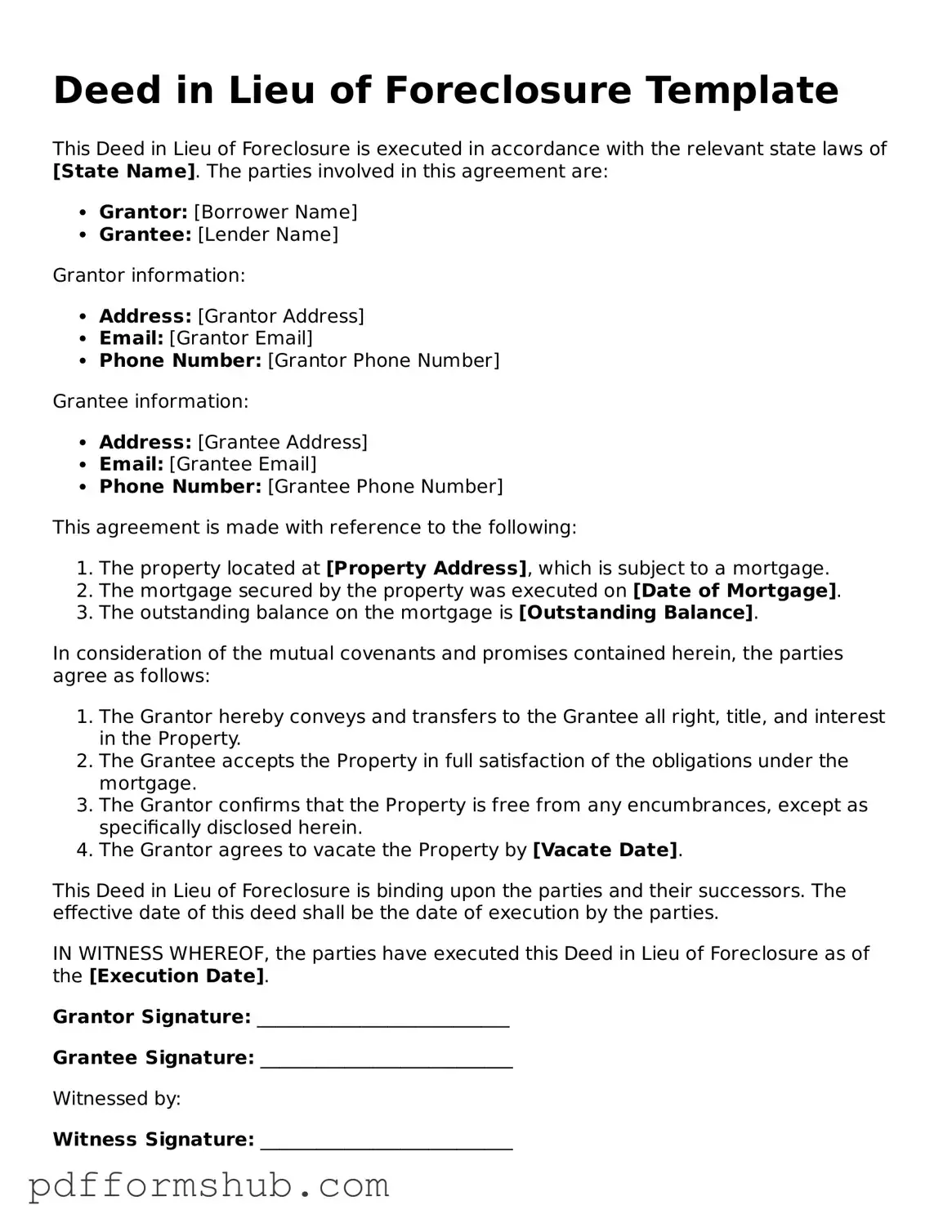Valid Deed in Lieu of Foreclosure Form
A Deed in Lieu of Foreclosure is a legal document that allows a homeowner to voluntarily transfer their property to the lender to avoid foreclosure. This option can provide a more straightforward resolution for those facing financial difficulties while minimizing the negative impact on their credit. If you are considering this option, please fill out the form by clicking the button below.
Customize Form
